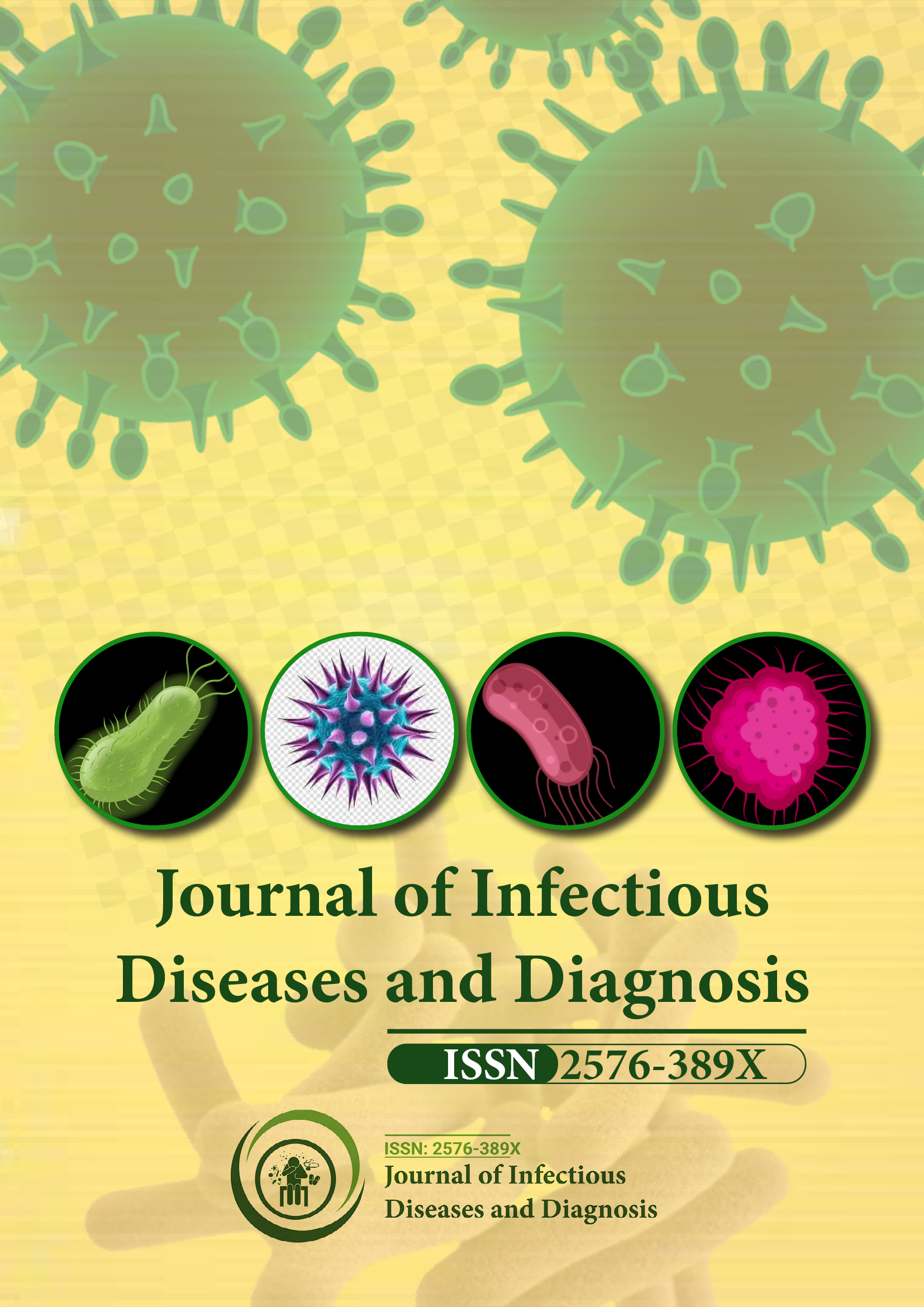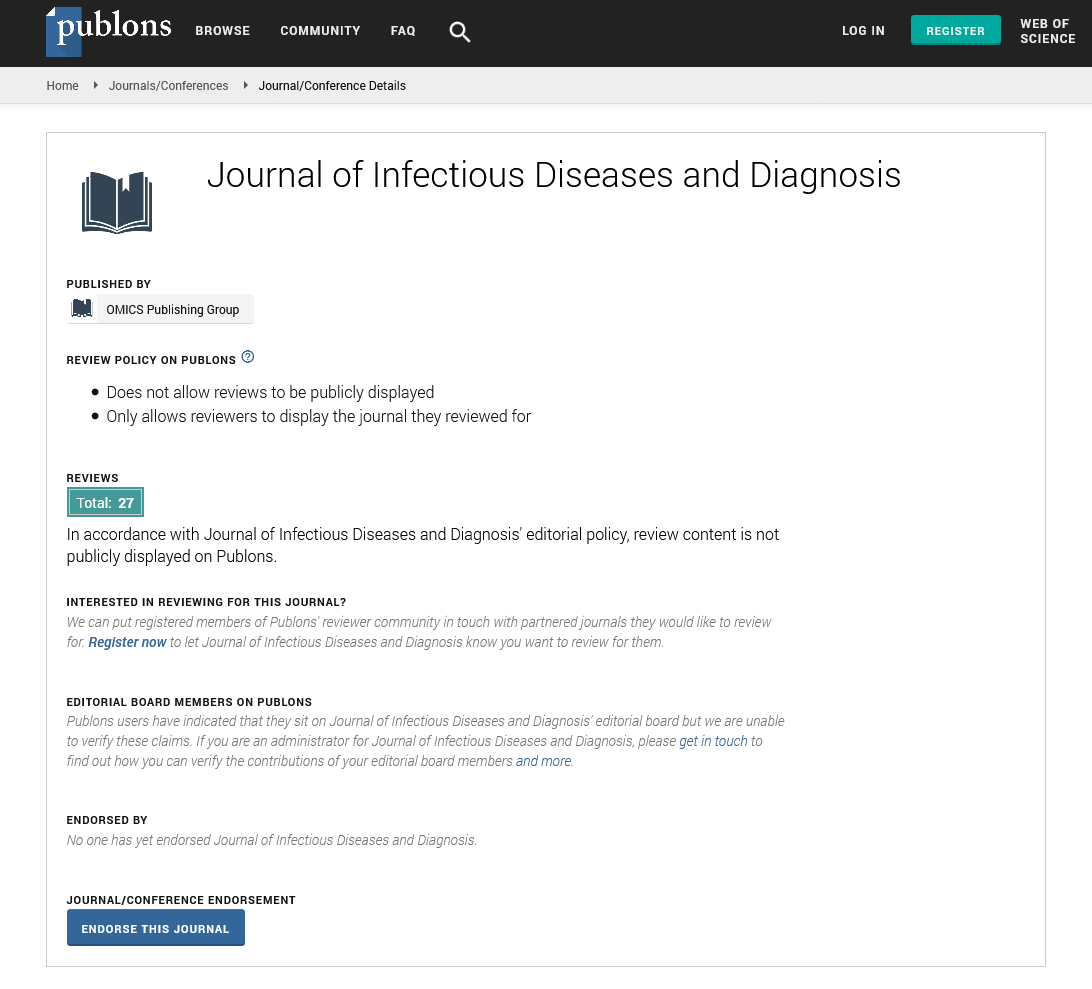Indexed In
- RefSeek
- Hamdard University
- EBSCO A-Z
- Publons
- Euro Pub
- Google Scholar
Useful Links
Share This Page
Journal Flyer

Open Access Journals
- Agri and Aquaculture
- Biochemistry
- Bioinformatics & Systems Biology
- Business & Management
- Chemistry
- Clinical Sciences
- Engineering
- Food & Nutrition
- General Science
- Genetics & Molecular Biology
- Immunology & Microbiology
- Medical Sciences
- Neuroscience & Psychology
- Nursing & Health Care
- Pharmaceutical Sciences
Short Communication - (2023) Volume 8, Issue 1
Comparing Approaches for Evaluating the Risk of Emerging Infectious Diseases in Environments with Seasonal Variations
Timo Vesikari*Received: 02-Jan-2023, Manuscript No. JIDD-23-20469; Editor assigned: 04-Jan-2023, Pre QC No. JIDD-23-20469; Reviewed: 18-Jan-2023, QC No. JIDD-23-20469; Revised: 25-Jan-2023, Manuscript No. JIDD-23-20469; Published: 01-Feb-2023, DOI: 10.35248/2576-389X.23.08.201
About the Study
Emerging Infectious Diseases (EIDs) are a growing global health concern and pose a significant threat to human, animal and environmental health. An EID is defined as a disease that is newly identified or has appeared for the first time in a population, or that has significantly changed in its ability to cause disease, or that has increased in incidence or geographic range. EIDs can have a profound impact on global health and economies, and can cause widespread panic and social disruption.
The increase in global travel and trade has led to the rapid spread of infectious diseases from one location to another. This has facilitated the spread of EIDs from endemic regions to new areas where populations may be more susceptible [1-4]. Changes the environment, such as deforestation and land use changes, can lead to increased contact between humans and wildlife, which can increase the risk of zoonotic infections. Climate change can also impact the distribution of vectors, such as mosquitoes, that transmit diseases. Overuse and misuse of antibiotics has led to the development of antibiotic-resistant bacteria, making it more difficult to treat infections. New pathogens can emerge through genetic mutations, recombination, or spillover from animal reservoirs [5].
The impact of EIDs can be severe and widespread. Outbreaks can cause widespread illness and death, disrupt economies, and undermine global security. The Ebola outbreak in West Africa in 2014-2015 is a prime example of the devastating impact that an EID can have. The outbreak resulted in over 28,000 confirmed cases and more than 11,000 deaths. It also caused widespread panic and had a significant impact on the economies of the affected countries.
To mitigate the threat from EIDs, it is important to have effective strategies in place for their early detection, identification, and control [6-8]. Some of the key strategies that can be used to address EIDs includes effective surveillance systems are critical for early detection and response to EIDs. This can include the establishment of sentinel surveillance systems, passive surveillance systems, and enhanced surveillance systems. Strengthening laboratory capacity is essential for the rapid identification of EIDs. This can involve the development of new diagnostic tests and the improvement of existing tests. Research and development play a critical role in the prevention and control of EIDs. This can include the development of new vaccines, drugs, and diagnostic tests [9].
International cooperation is essential for an effective response to EIDs. This can involve the sharing of information and expertise between countries, the coordination of response efforts, and the development of international guidelines and protocols. Community engagement and the involvement of the private sector are critical for the success of EID control efforts [10]. This can include community-based surveillance, community education and awareness campaigns, and the involvement of the private sector in the development of new products and technologies.
Conclusion
In conclusion, EIDs are a growing global health concern that poses a significant threat to human, animal and environmental health. Effective strategies are needed to address this threat, including strengthening surveillance systems, improving laboratory capacity, enhancing research and development, strengthening international cooperation, and engaging communities and the private sector. Addressing the threat from EIDs requires a multi-faceted and integrated approach, involving the collaboration of multiple sectors and stakeholders.
References
- Polosukhin VV, Richmond BW, Du RH. Secretory IgA deficiency in individual small airways is associated with persistent inflammation and remodeling. Am J Respir Crit Care Med. 2017;195(8):1010-1021.
[Crossref] [Google Scholar] [PubMed]
- Lareau SC, Fahy B, Meek P, Wang A. Chronic obstructive pulmonary disease (COPD). Am J Respir Crit Care Med. 2019;199(1):P1-P2.
[Crossref] [Google Scholar] [PubMed]
- Wang C, Xu J, Yang L. Prevalence and risk factors of chronic obstructive pulmonary disease in China (the China Pulmonary Health [CPH]study): A national cross-sectional study. Lancet 2018;39l(2):1706-1717.
[Crossref] [Google Scholar] [PubMed]
- Mathers CD, Loncar D. Projections of global mortality and burden of disease from 2002 to 2030. PLoS Med. 2006;3(11):e442.
[Crossref] [Google Scholar] [PubMed]
- BR Celli, W MacNee. Standards for the diagnosis and treatment of patients with COPD: a summary of the ATS/ERS position paper. Eur Respir J. 2004;23(6):932-946.
[Crossref] [Google Scholar] [PubMed]
- Cui Z, Huang F, Liang D, Huang Y, Qin H, Ye J, et al. Tuberculosis among ambulatory people living with HIV in Guangxi Province, China: A longitudinal study. Int J Environ Res Public Health. 2022;19(19):12280.
[Crossref] [Google Scholar] [PubMed]
- Nyamogoba HDN, Mbuthia G, Mining S, Kikuvi G, Biegon R, Mpoke S, et al. HIV co-infection with tuberculous and non-tuberculous mycobacteria in western Kenya: Challenges in the diagnosis and management. Afr Health Sci. 2013;12(3):305-311.
[Crossref] [Google Scholar] [PubMed]
- Datiko DG, Yassin MA, Chekol LT, Kabeto LE, Lindtjorn B. The rate of TB-HIV co-infection depends on the prevalence of HIV infection in a community. BMC Public Health. 2008;8(1):1-8.
[Crossref] [Google Scholar] [PubMed]
- Post FA, Grint D, Werlinrud AM, Panteleev A, Riekstina V, Malashenkov EA, et al. Multi-drug-resistant tuberculosis in HIV positive patients in Eastern Europe. J Infect. 2014;68(3):259-263.
[Crossref] [Google Scholar] [PubMed]
- Cui Z, Lin M, Nie S, Lan R. Risk factors associated with Tuberculosis (TB) among people living with HIV/AIDS: A pair matched case-control study in Guangxi, China. PLoS One. 2017;12(3):1-12.
[Crossref] [Google Scholar] [PubMed]
Citation: Vesikari T (2023) Comparing Approaches for Evaluating the Risk of Emerging Infectious Diseases in Environments with Seasonal Variations. J Infect Dis Diagn. 8:201.
Copyright: © 2023 Vesikari T. This is an open-access article distributed under the terms of the Creative Commons Attribution License, which permits unrestricted use, distribution, and reproduction in any medium, provided the original author and source are credited.

